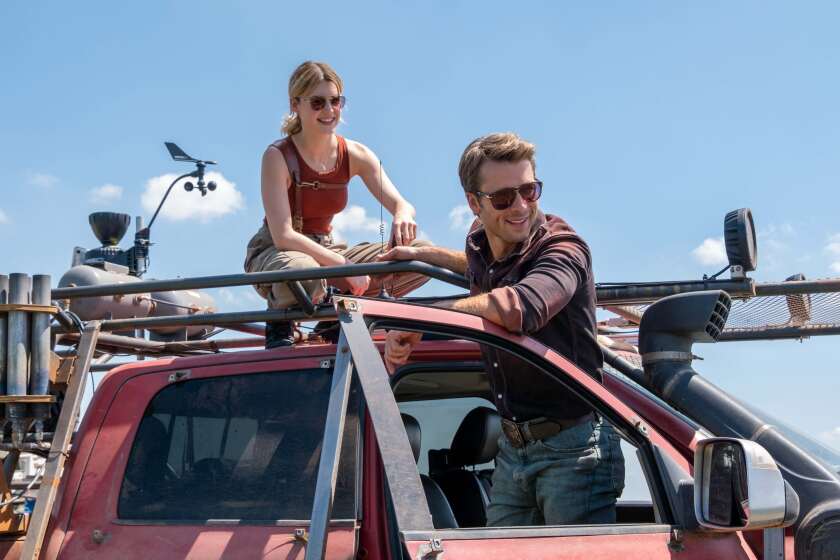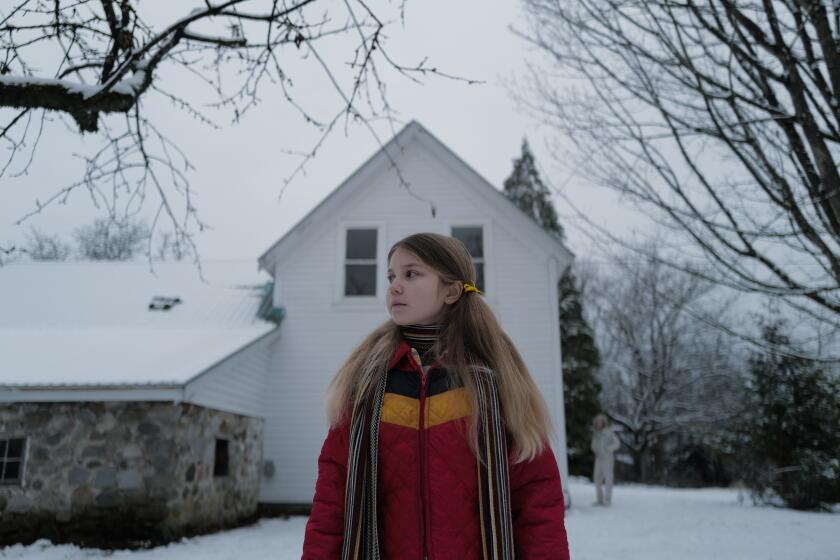Lots of Mouses Will Be Stirring : Home entertainment: Visual effects are dazzling on two of three CD-ROMs due in stores in time for the first holiday season buying blitz of computer games.
The big three CD-ROM releases of the holiday season are about to hit the stores and it’s a safe bet none of them will appear in future editions of “Cultural Literacy.”
The canon of Western culture will not likely be enriched by the 11th Hour, Rebel Assault II and the Dig, nor was it meant to be.
In this first holiday shopping season in which CD-ROMs are expected to play a significant role, these titles are the digital equivalent of action flicks, with not much of a higher goal than entertainment and repeated viewings. They are long-awaited: Two are sequels to blockbusters, while the other marks the entree of filmmaker Steven Spielberg into computer entertainment.
But you won’t find a Myst, Gadget or even the more esoteric Cosmology of Kyoto among them. Still, they are indeed entertaining, to varying degrees. And two are so dazzling, technically, that their shortcomings in narrative can be forgiven.
A few caveats before moving on to each. These are big games, megabyte speaking, which require fast computers if they are to be enjoyed at their best. A Pentium is desirable, although you can get by on a 486.
Currently, all are available only on the DOS platform. Macintosh versions are pending, but will probably not be released before Christmas.
And finally, it pays to shop around. A check of mail order houses found that the four-disc 11th Hour was selling for prices ranging from about $50 to $70. The two-disc Rebel Assault II and single-disc the Dig each cost about $40.
*
Back in the ancient era of CD-ROM development, circa 1990, computer programmers Graeme Devine and Rod Landeros came up with the idea of producing a multimedia, haunted house mystery game that would take advantage of the large storage capacity of the digital discs.
When the game the 7th Guest was finally released in 1993, it proved to be so hugely popular that it became the “I Love Lucy” of CD-ROMs, convincing many computer buffs that they should buy CD-ROM players, just as an earlier generation bought TVs to see the landmark sitcom.
The 7th Guest was a daunting act to follow, but the sequel, the 11th Hour (scheduled to go on sale next Thursday, almost exactly a year later than its original planned release) proves that Devine and Landeros are still in a breakthrough mode.
While numerous home computer games feature full-screen video, the lengthy clips in the 11th Hour are far above the norm, technically. The images are clear, flowing and mostly absent of the pixilation that plagues most CD-ROM offerings.
The production values and acting in these clips are far more accomplished than the comparatively amateurish video sequences in 7th Guest.
The mouse click-driven movement through the haunted mansion, where game players are called upon to solve dozens of demanding puzzles in order to get to the bottom of the mystery, is likewise far more elegant than in the original game. The story line, concerning a reporter in search of a former girlfriend trapped inside the mansion, is more complex.
The game-play in 11th Hour is similar to that of the original, and that’s the project’s major shortfall. While the puzzles in 11th Hour are challenging and clever, they are not at all integrated into the narrative. For example, in order to see a video clip of the trapped woman, you have to first solve a puzzle presented on a chess board.
The constant interruption of the narrative prevents 11th Hour from producing the mysterious atmosphere it strives for and keeps it from being totally involving.
But die-hard fans of 7th Guest--and they are legion--are not likely to be disappointed.
*
For sheer, digital thrills it would be hard to beat Rebel Assault II, the breakneck-paced follow-up to the 1994 title that proved a home computer game could be as exciting as any found in an arcade.
This new game from LucasArts shares with the original a “Star Wars” theme. This time, the sky jockeys of the Rebel Alliance are on a mission to destroy a mysterious new weapon unleashed by the Dark Side.
Whiz-kid Vincent Lee, who likewise created the first game, has tweaked up the technical side. The outer-space settings, many of which are viewed at breakneck speeds during battle sequences, are astonishingly detailed.
And the video clips, overseen by veteran screenwriter and film director Hal Barwood, are the most professional and enjoyable in any game yet.
There’s nothing too new about the outer game-play--as in Rebel I, you are called upon to steer your jet fighter through a variety of dangerous locales, such as asteroid fields or Dark Side-infested territories. But this sequel also has shipboard adventures in which you have to zap enemy troopers with your laser gun. In these sequences, the control you have over your on-screen alter ego is staggering.
The story is pretty much a no-brainer, but Rebel Assault II is so much fun and the craft that went into it so astonishing that you just can’t help going for “just one more level,” even if it’s way past bedtime.
*
It’s hard to imagine Spielberg wouldn’t be allowed to make any movie he wanted to do, but his vision for a science-fiction project called the Dig would have been so expensive to realize on film that it remained shelved for several years.
Finally, he decided to let the game developers at LucasArts use his story as the basis for a computer game that would, not incidentally, have his name on the box.
The game’s developers have given interviews in which they said Spielberg’s involvement was mostly tangential, apart from the story.
That story line, about a trio of astronauts sent on a mission to alter the course of an asteroid heading for Earth, is intriguing. The asteroid turns out to be an alien spaceship that transports them to a mysterious planet where they have to overcome numerous obstacles to survive.
Indeed, the basic story is intriguing enough to keep you working at the game’s various puzzles just so you can find out what happens next.
But on the whole, the project is a disappointment, especially in its design. While other LucasArts releases, such as Rebel Assault II, sport sophisticated settings, the look of Dig is more attune with Saturday morning cartoons.
And the characters--the macho-but-sensitive team leader, plucky journalist and cold-hearted scientist with a German accent (guess which one dies)--are standard issue. One plus is that the game does offer a strong female character, which is still a rarity in the genre.
More to Read
The biggest entertainment stories
Get our big stories about Hollywood, film, television, music, arts, culture and more right in your inbox as soon as they publish.
You may occasionally receive promotional content from the Los Angeles Times.







